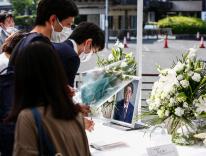Faith kept
I found the discussion among the editors in the eighty-fifth-anniversary issue (“Keeping the Faith,” November 6) both heartwarming and inspiring: a discussion among people committed to a future for the Catholic tradition. It made me proud to be a Commonweal Catholic. Long live this reasoned and independent approach to the place of faith in society. Commonweal is one of the few magazines that I read cover to cover, and that I reference in preaching. I trust that the editors will be able to withstand any efforts by bishops to exercise control over the content of the magazine (for example, Cardinal Francis George’s remarks in the presidential address at the U.S. Conference of Catholic Bishops meeting in Baltimore last month). Your magazine is far from being “sectarian, less than fully Catholic.” My own faith would surely be less Catholic without Commonweal.
KEN SMITS, OFM Cap
Fond du Lac, Wis.
‘Ad multos annos’
Congratulations on your eighty-fifth anniversary! And thanks.
GEORGE MCCAULEY, SJ
Bronx, N.Y.
Indomitable spirit
John Connelly’s article “The Price of Freedom: What Came Down with the Berlin Wall” (November 20), featuring the Bavarian border town of Plauen, was outstanding but not surprising. In that area near what was then Czechoslovakia, there is a legend that the Knights of Blanik sleep in the mountains waiting for the hour to deliver the people from the oppressor. Once they rode forth with Thomas Masaryk, the first Czech president, and his legionnaires, who vowed that they would “ride again.” The spirit of those people has been tested time and again, and it was that spirit, more than President Ronald Reagan’s rhetoric to an already resigned Mikhail Gorbachev, that won the day—at least in my opinion. My parents emigrated from that area.
J. M. ZATLUKAL
Wappingers Falls, N.Y.
Exclusive!
Once again I was reminded why I have subscribed to Commonweal for many years. Stephen Barr’s “More than Machines: Physics & Free Will” (November 20) is the type of article I would find in hardly any other magazine. What a pleasure it was to come across an essay that addresses one of the most fundamental questions of who and what we are as human beings. The answer to that question has profound implications for us as individuals and for society as a whole.
Thank you.
ROBERT BEEZAT
Racine, Wis.
Attention, advertisers
About forty-five years ago, when I had my first full-time job and my own apartment, I saw an ad in Commonweal for a Nativity set made by Freedomcrafts in Greenville, Missouri. This was at the height of the civil-rights movement. The organization was formed, if memory serves, to provide a source of income for people who had lost employment because they attempted to exercise their right to vote or worked to promote civil rights.
The eight simply formed figures I bought have been a source of delight for me each Christmas season, as I unpack and set them out—even if my husband refers to two of them as “the shepherd and his frog.” I’ve never seen another set like mine, and I wonder if there are any other longtime Commonweal readers who purchased the figures in response to that ad and cherish them as much as I do.
CAROL A. HUBERT
Prescott, Ariz.
The old public option
Regarding J. Peter Nixon’s article “When Bigger Is Better” (November 6): It is worth noting that one of the earliest acts of Congress established a series of marine hospitals for merchant seamen and other federal beneficiaries. It was signed into law by President John Adams on July 16, 1798. While the construction of the hospitals themselves was funded by Congress, the care provided was paid for by taxing merchant seamen twenty cents a month. That funding arrangement lasted nearly a century, until it was changed in 1884, when hospital funding came from a tonnage tax on vessels entering the United States. After 1906, Congress funded the hospitals directly. So our government’s involvement in health care is of very long standing. The “public option” is nothing new.
The precedent for this network of hospitals reaches even farther into the past. Britain established its first hospitals for seamen in 1588, shortly after the defeat of the Spanish Armada.
The U.S. marine hospitals were closed in 1981. They had been spawned by the Marine Hospital Service, which began in 1870, which in turn became our current U.S. Public Health Service. That explains why the Surgeon General and other USPHS officers wear a uniform similar to that of the U.S. Navy (in case you’ve ever wondered).
MICHAEL J. CASSIDY
Oakland, Calif.
Hammer time
Cathleen Kaveny hit the nail on the head in her column “Risk & Responsibility” (November 6). I’ve spent the past thirty-six years working in the insurance business (although not in health insurance). As a Christian, I believe health care should not be handled through insurance, for all the reasons Kaveny provided. Good to see her argument in print.
CHUCK ORLOWICZ
Rutherford, N.J.
More, please
In his column “Feeding the Hungry” (October 23), Fr. Nonomen gives great peace and comfort to this reader. I await more of his wisdom from the parish trenches.
SUSAN KAUP KELLEY
Somerville, Mass.
Please email comments to [email protected] and join the conversation on our Facebook page.
Share
Previous Story
Happy Hanukkah! But not too happy...
Next Story
Obama’s Surge


